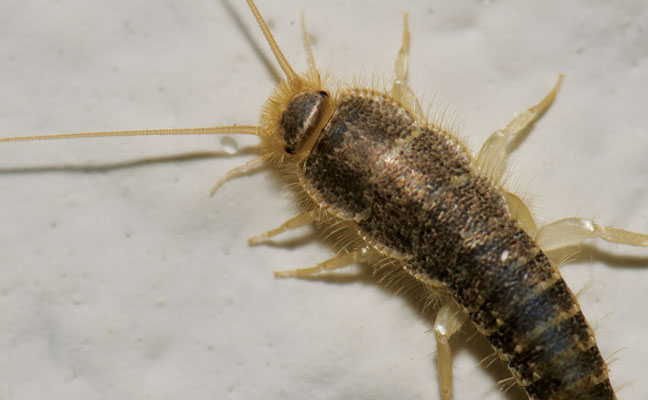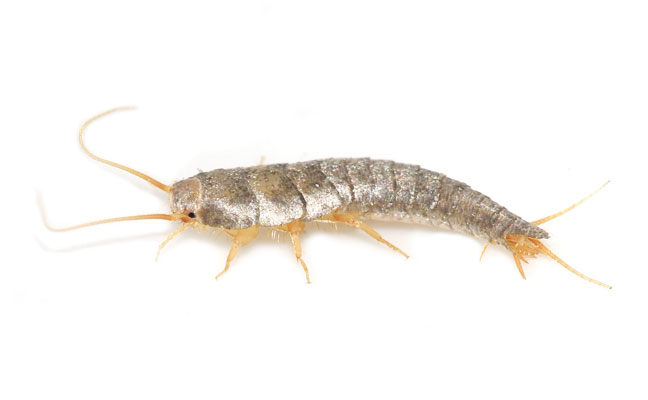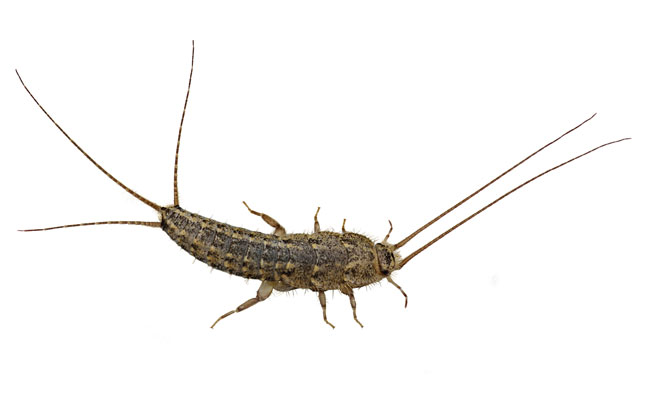
Check hairbrushes at your silverfish accounts — this pest likes to eat hair and dandruff. Photo: Víctor Suárez Naranjo / iStock / Getty Images Plus / Getty Images
Silverfish, distinguished by their silvery-gray appearance and rapid, wiggly movements, are prevalent indoor pests.
Wygodzinsky’s 1972 research indicates that only three silverfish species are native to the U.S., whereas six are endemic to the Caribbean, hinting at potential human-induced introductions. Arnett’s 2000 taxonomy study identified 13 silverfish species in the U.S., highlighting notable indoor varieties such as the common silverfish (Lepisma saccharina) and the gray silverfish (Ctenolepisma longicaudata). The common silverfish is frequently found in urban areas, per Robinson (2005), while the gray, or longtailed, silverfish is recognized as a household pest, according to Pest Management Professional Hall of Famer Arnold Mallis (Class of 2007) in a 1941 journal article. These two species are our focus for the scope of this article.
Biology and behavior
The common silverfish develops and reproduces best at temperatures of 71.6 degrees Fahrenheit to 80 degrees Fahrenheit, and relative humidity of 75 percent to 97 percent (Sweetman, 1939). Meanwhile, Heeg (1967) found the optimum temperature range for gray silverfish to be of 46.4 degrees Fahrenheit to 77 degrees Fahrenheit. Similarly, Lindsay (1940) found this species’ ideal relative humidity to be between 70 percent and 85 percent.
This inclination of both species toward damp, dark spaces make areas such as bathrooms, basements and kitchens particularly prone to infestations of both these species, establishing conditions conducive to their presence and potential damage.
While silverfish are drawn to damp places, what they consume is crucial to their survival. Wall’s (1953) observations reveal silverfish are general feeders, showing a particular attraction to viscose rayon — a fabric material made from wood pulp. This preference signifies the potential risk of damage to items such as carpets and upholstery made from this material. Lindsay’s (1940) study says silverfish are active at night, making them hard to spot. Even though they don’t harm people, Mallis (1941) warns that silverfish can damage household items — especially clothing, furniture, stored food and books.

Lepisma saccharina is known as the common silverfish, and likes to snack on starches and glues, among other items. Photo: HHelene / iStock / Getty Images Plus / Getty Images
To effectively control and prevent silverfish, it’s important to use a combination of chemical and non-chemical control methods.
Non-chemical control
- Maintain cleanliness. Regular cleaning, especially in damp areas such as bathrooms, basements and laundry rooms, is crucial for preventing silverfish. Vacuuming and sweeping regularly will help remove their food sources and reduce the number of pests
in the area. - Seal entry points. Because silverfish thrive in moist outdoor environments and may enter homes from outdoors, it’s crucial to seal entryways. Use caulking to seal any cracks or holes around pipes, windows and doors to prevent silverfish from entering the home.
- Manage moisture. Repair any leaks or drips in the plumbing to reduce moisture levels in the home.
- Store food properly. Ensure your customers keep food in sealed containers and avoid leaving out pet food or crumbs. Even the smallest amounts of food can sustain silverfish.
- Dehumidify the environment. If the affected area is particularly humid, consider using a dehumidifier to reduce moisture levels in the air. This makes the environment less hospitable to silverfish.
- Reduce clutter. Silverfish thrive in cluttered areas, so it’s crucial to keep spaces organized and free of unnecessary items. Store books, magazines and papers in sealed containers or plastic bags to reduce their attractiveness as a food source.

Ctenolepisma longicaudata, known as the gray or longtailed silverfish, is like its common cousin except with longer tails and antennae. Photo: Andreas Häuslbetz / iStock / Getty Images Plus / Getty Images
Chemical control
- Indoors: In cases where non-chemical methods prove inadequate, the use of an approved residual insecticide in cracks and crevices can be effective in controlling silverfish. Read the label thoroughly to prevent any contamination of food surfaces
and non-target areas. Apply liquid insecticide to cracks, crevices, and targeted spots where silverfish are present, including clothing and storage spaces. When using dust formulations, apply a thin layer in voids and cracks, being mindful of drift. Ensure proper labeling of the dust, as moisture on treated surfaces may impact its effectiveness. - Outdoors: To prevent most pests, including silverfish, from entering a well-maintained property, consider making a perimeter treatment. Concentrate on areas where pests might enter, paying close attention to entryways, gaps under doors, and around windows. This proactive measure can help create a barrier that deters pests, including silverfish, from accessing the account.
Inside and out, you also can use appropriately labeled commercial baits to target and control silverfish populations effectively (Sims and Appel, 2012).
Regardless of your treatment choices, regular monitoring and reapplication may be necessary for sustained results.
By adopting these preventive and control measures, you can efficiently address silverfish-related concerns, shielding the structures from potential damage and disturbances. It’s essential to complement these strategies with pest-proofing techniques, emphasizing the reduction of moisture in and around the structure for optimal effectiveness.
References
- Arnett, R.H. Jr. (2000). American Insects (2nd ed.). CRC Press, Boca Raton, FL. 1003 pp.
- Heeg, J. (1969). “Studies on Thysanura III. some factors affecting the distribution of South African Thysanura.” Zoologica Africana, 4 (2): 135–143. https://www.tandfonline.com/doi/abs/10.1080/00445096.1969.11447370
- Lindsay, E. (1940). “The Biology of the Silverfish, Ctenolepisma longicaudata Esch., with Particular Reference to its Feeding Habits.” Proceedings of the Royal Society of Victoria, 52(Part 1), 35–83.
- Mallis, A. (1941). “Preliminary Experiments on the Silverfish Ctenolepisma urbani Slabaugh.” Journal of Economic Entomology, 34, 787–791. https://doi.org/10.1093/jee/34.6.787
- Robinson, W.H. (2005). Urban Insects and Arachnids (1st ed). Cambridge University Press, Cambridge.
- Sims, S.R., and Appel, A.G. (2012). “Efficacy of Commercial Baits and New Active Ingredients Against Firebrats and Silverfish (Zygentoma: Lepismatidae).” Journal of Economic Entomology, 105(4), 1385–1391. https://doi.org/10.1603/EC12084
- Sweetman, H.L. (1939). “Responses of the Silverfish, Lepisma saccharina L., to Its Physical Environment.” Journal of Economic Entomology, 32(5), 698–700. https://doi.org/10.1093/jee/32.5.698
- Wall, W.J., Jr. (1953). “Damage to Carpet Materials by Silverfish.” Journal of Economic Entomology, 46(6), 1121–1122. https://doi.org/10.1093/jee/46.6.1121
- Wygodzinsky, P. (1972). “A Review of the Silverfish (Lepismatidae, Thysanura) of the United States and the Caribbean Area.” American Museum Novitates, 2481, 1–26.
Leave A Comment